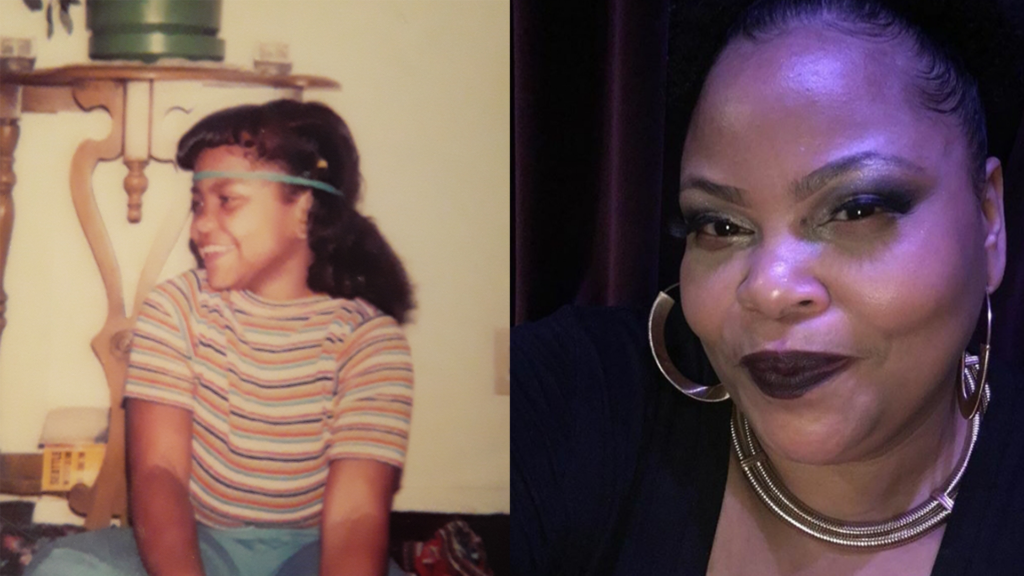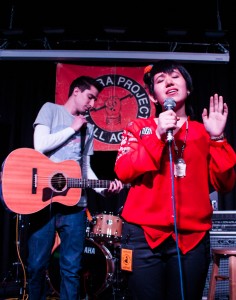One of the biggest perks of my job as a teaching artist at Orca is that I can practice being a teacher with the support and resources of several other educators at my side. I get to receive feedback, try new approaches and strategies, and assess how I am doing professionally on a daily basis.
Each day during first period, this dynamic works in my favor during the song writing class that I co-teach with the AWESOME sixth-grade teachers, Jeff and Tanisha. In the classroom, I get to work through my own creative and professional process alongside those of my students and colleagues.
Our classroom culture aims to create an open and authentic space to write about what interests you. A typical day in song writing (if there is such a thing) might include any of the following: dance warm ups to Justin Timberlake songs, a get–to-know-you game based on Musical Chairs, a presentation on recording via Garage Band, a game of The Human Knot, a visit from fellow CSI teaching artist and song writing guru, Amy, and sustained time to work on writing lyrics.
While teaching artists consider myriad aspects of creativity and education, for now I want to focus on critique, feedback loops, and assessment because there is an element of each in the others. Critique is essential for any artist to hear new perspectives on their work and have the opportunity to engage in something they hadn’t considered. Feedback loops are the result of critiques. For example, “my classmates said the piece wasn’t relateable, so I will tone down the echo effect that makes my lyrics incomprehensible.” Assessment is trickier to define. Arts Corps’ definition is to “make student learning visible and give young artists reflective time.” In no way is assessment a grade or judgement of a final product. It is a chance for students to decide how their skills, understanding, behavior, and attitude have changed over the course of the class or project. In a nutshell, feedback from others and the willingness to receive and create multiple iterations from that feedback is critical to how they will assess their own learning.
For the most recent project, we decided to try a new method of peer evaluation and feedback: post-its. Since I am from Minneapolis, I decided it was good to keep my fellow Minnesotans employed by requiring each of our 20 students to give feedback to each of the 10 partner groups, including themselves, on post-its. (I’ll leave the math to you.) After each song, we took a few minutes to write what we heard that we liked, and how we thought they could improve for the next project. This was the result:


Suggestions, critique, feedback, and compliments were stuck to each laptop so that we all had the chance to receive feedback. For self assessment, we asked students to write (again on post-its. You’re welcome, 3M.) responses to the prompts, “one thing that was awesome about the way I worked was…” and “one thing I would change about the way I worked was…” Their thoughtfulness was impressive: “I helped pick out tracks. I would want to give more ideas.” And, “I tried new things and pushed myself to step out of my comfort zone. I would change how I worked by pushing myself a little further to sing maybe.”
At a time of transition in my life, my Uncle Dave told me to, “Measure your success in ways that are meaningful to you, not what others might think.” I have it written on a (virtual) post-it on my laptop screen as reminder to myself of what is important as I experience new identities in various stages of young adulthood. As a rookie artist and educator, evidence of my learning is visible in how I encourage students to be honest and vulnerable, create stories from potentially nebulous ideas, risk putting them on display for peers, and stand tall in their own definitions of success— and to do the same things myself.
-Liz Farmer
AmeriCorps Artist-in-Residence
Read More




